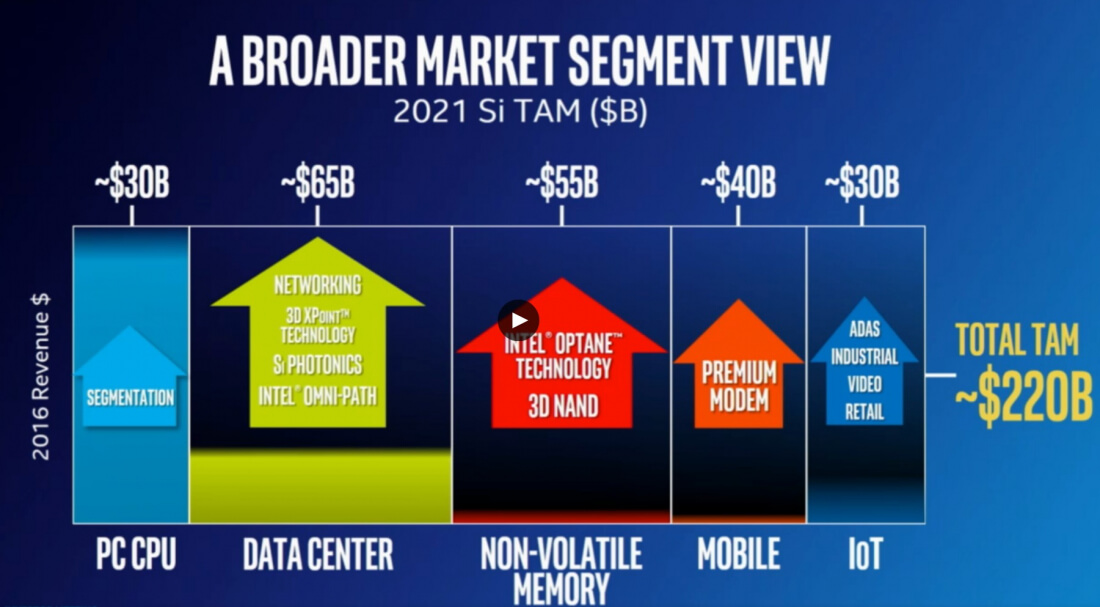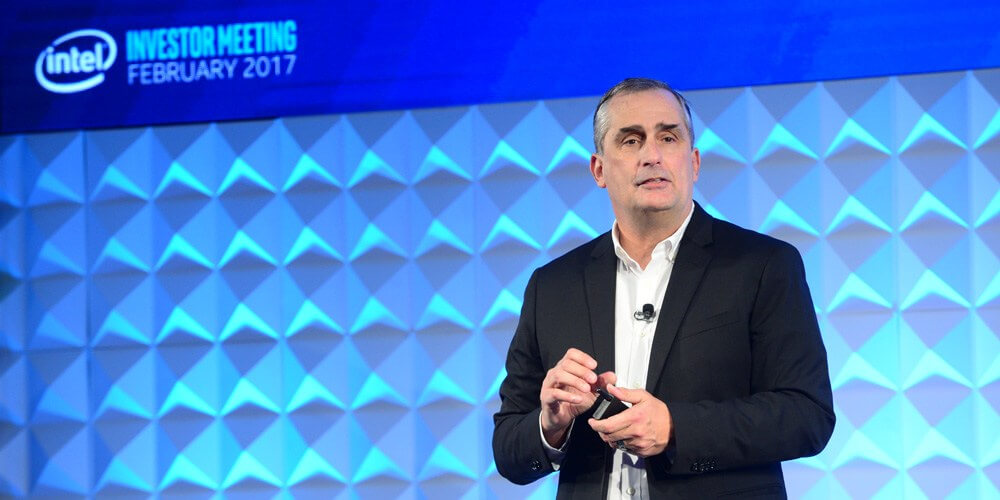Intel held its annual investor day last week, and while the big news was that the company's eighth-generation Core CPUs would remain on a 14nm manufacturing node, it also announced that the firm was going "data center first."
Intel has in the past brought its new chip technologies to the PC market before making their way to servers, but the company's head of server chips, Diane Bryant revealed that this process is changing.
While the worldwide PC market is stagnating, the data center sector continues to see rapid growth. An Intel presentation showed that the total available market (TAM) - the maximum available revenue the company could generate if it owned the entire sector - was $30 billion for its PC CPU business. For data centers, the figure is more than double - $65 billion.

As part of the company's restructuring, "each of the functional groups inside of Intel look at their business and their investments and their strategies, in the context of making the data center a priority," said Intel's data center chief, Diane Bryant. "And that includes being first to launch on a next-generation process technology node, and that's a big deal."
As noted by Fortune, with the amount of time it takes to develop each new generation of chips, we probably won't see the effects of this shift in strategy for a few years. It's likely to be 2019's 10nm Tiger Lake chips that arrive for servers first, followed by the company's 7 nm chips.
While the move is unlikely to be welcomed by PC fans, it doesn't spell the end for the platform. Like any company, Intel is just placing its primary focus on where the money is. The good news is that even as the PC market declined, the success of Intel's Core i7 chips saw the firm raise its operating profits by 30 percent - a trend that's expected to continue.
